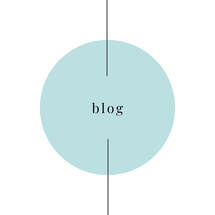The practice of Swedish massage can be defined in a very simple way; it’s a series of specific strokes, techniques and movements that are performed usually in a set order. The Swedish massage techniques are referred to as
Effleurage - Long, gliding strokes, used to spread out the oil, but also for the therapist to get a first idea of how the clients body is feels, where there are more tensions and what is needed. Petrissage - kneading the muscles with a smaller movement, typically slow and rhythmical. This should be done with the padded part of the palms. Friction - Slightly firmer and deeper movements, circular rubbing done with fingertips. Tapotement - A brisk tapping or rhythmic percussion movement where the edge of the hand is used, like karate chops. Vibration - Shaking or vibrating (or rocking) specific muscle groups to relieve tension and decrease stress. Stretching - Is sometimes used for specific muscle groups. The pressure that is used in Swedish massage is light to firm, but it’s rarely very strong. This typ of techniques can be used for either a therapeutic massage, or for purely relaxing session. Swedish massage is also in many ways the base for deep tissue massage, but some of the main differences are that the pressure used is stronger to release tension deeper within the muscles and fascia. Sometimes the therapist uses elbows and knuckles for the stronger pressure. It is also mostly focused on the problem areas that have more tension or pain. Whereas a more relaxing massage is more general and does not relief pain and muscle knots in the same way. Deep tissue massage can be slightly uncomfortable at times, however, it should never be painful, you should always be able to relax during the sessions. One of the more important differences between a Swedish and a deep tissue massage though, is the intention of the massage, what your body actually need. It's popular among people who are recovering from muscle injuries due to sports or an accident, but it can be very beneficial for people who have for example structural problems of the spine and muscles, chronic pain etc. This form of massage can often help release chronic muscle tension and improve correct muscle function. In Sweden, when you go for "a massage", it’s the Swedish massage type you’ll most likely receive. Fun fact though, Swedish massage is actually not really Swedish! In some literature a Swede named Per Henrik Ling (1776-1839) is referred to as the father of Swedish massage. He was pioneer within the teaching of physical education in Sweden during the early 19th century. He was appointed master of fencing and it is said that he cured his fencing-injured elbow with massage-like movements. Ling later founded the Royal Central Gymnastics Institute in Stockholm in 1813, and developed ”the Swedish Movement System” (gymnastic movements for health improvements). Even though Ling is often credited as the inventor of Swedish massage, this was never a part of his Gymnastic Movements or the curriculum of the Royal Central Gymnastic Institute. Instead it was a Dutch practitioner named Johann Georg Mezger (1838–1909) that first standardized the massage as we know it today, and adopted the French names that the Swedish massage techniques are called (effleurage, petrissage etc). Mezger passed his doctoral exam with a dissertation on how to treat joint distortion with massage, which would later be the base for the Swedish massage. In the end, after some years of working most massage therapists develop their own way. Massage becomes something that is very personal, both for the therapists but also for the clients, based on their personal preferences and trust in the therapist. My advise is always to pay less attention to the names of techniques, but more to the description of how they work and their goals and intentions.
0 Comments
Your comment will be posted after it is approved.
Leave a Reply. |
Proudly powered by Weebly



 RSS Feed
RSS Feed